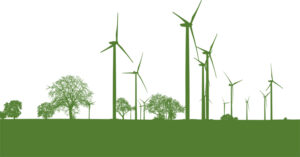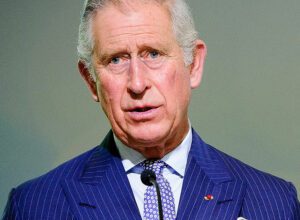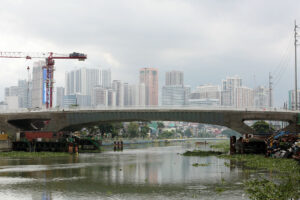Uncapping the Philippines’ renewable energy potential

Renewable energy is quickly becoming integral to the future of economic development, not only because of concerns about mitigating the effects on climate change, but also as a sustainable and efficient means to meet the ever-increasing energy needs of a developing world.
In fact, the International Energy Agency (IEA) found that countries all over the world added as much as 50% more renewable capacity in 2023 than in 2022, predicting that the pace will accelerate over the next five years until it has hit a peak.
“The world’s capacity to generate renewable electricity is expanding faster than at any time in the last three decades, giving it a real chance of achieving the goal of tripling global capacity by 2030 that governments set at the COP28 climate change conference,” the IEA says in a new report.
According to Renewables 2023, the IEA’s annual market report on the sector, the amount of renewable energy capacity added to energy systems around the world have pushed it to almost 510 gigawatts (GW), with solar PV accounting for three-quarters of additions worldwide.
China saw the most increase, commissioning as much solar PV in 2023 as the entire globe did in 2022. At the same time, it also added 66% more wind power to its grid. All-time highs were also reached by the expansions of renewable energy capacity in Brazil, the US, and Europe.
The IEA noted, however, that a lack of financing for emerging and developing economies is a key issue that will hinder renewables’ growth if left unaddressed.
“The new IEA report shows that under current policies and market conditions, global renewable capacity is already on course to increase by two-and-a-half times by 2030. It’s not enough yet to reach the COP28 goal of tripling renewables, but we’re moving closer — and governments have the tools needed to close the gap,” said IEA Executive Director Fatih Birol.
“Onshore wind and solar PV are cheaper today than new fossil fuel plants almost everywhere and cheaper than existing fossil fuel plants in most countries. There are still some big hurdles to overcome, including the difficult global macroeconomic environment,” Mr. Birol added.
He also emphasized the most pressing challenge for the international community at large was “rapidly scaling up financing and deployment of renewables in most emerging and developing economies, many of which are being left behind in the new energy economy.”
“Success in meeting the tripling goal will hinge on this,” he said.
Photo from Pixabay
Fortunately for the Philippines, the renewable energy (RE) sector has been picking up steam. The country recently placed fourth place in the Climatescope report issued by BloombergNEF, which analyzes clean energy progress and investment attractiveness across 110 developing economies.
The report pointed to the Philippines’ green energy auctions, feed-in tariffs, net-metering programs, tax breaks, and aggressive RE targets as the factors that pushed the country to break into the top five for the first time. The Department of Energy (DoE) wants to see a rise in the percentage of renewable energy to 35% by 2030 and 50% by 2040.
Endowed with a diverse array of natural resources and a burgeoning commitment to sustainable development, the Philippines is slowly gaining worldwide attention with its renewable energy potential. Key sectors such as geothermal, solar, wind, hydropower, biomass, and emerging technologies like marine renewables are ripe for investment from both local and foreign firms.
In 2023, the country also saw renewable energy commercial projects with awarded service contracts rising by 26%, led by solar technology, according to data released by the DoE. RE projects for the year totaled 1,220 with a potential capacity of 134,813.79 megawatts (MW), higher than the 965 recorded in 2022 with a capacity of 80,396.61 MW.
Of the total, there are 434 solar projects in the country with a 28,913.78-MW potential capacity. This was followed by 428 hydropower projects with 18,902.96 MW and 252 wind power projects with 85,692.964 MW.
In addition, there are also 58 biomass projects with 206.88 MW; 39 geothermal projects with 1,063.20 MW; and nine ocean energy projects with 34 MW.
Moreover, the Maharlika Investment Corp. (MIC), which governs the Maharlika Investment Fund (MIF), the sovereign wealth fund instituted by the Marcos Jr. administration, identified the RE sector to likely be the first target sector to receive investment.
“I can only talk about sectors because we’ve got non-disclosure agreements with those who we’re speaking with. So, we’re aiming for… energy sector would be the first, I think. Then you’ve got infrastructure and agriculture,” MIC President and Chief Executive Officer Rafael Consing, Jr. was quoted as saying, adding that energy security is one of the MIC’s sectors of focus.
In particular, the MIC is focusing on the RE sector as a means to find new sources of electricity to diversify supply and create price stability, grid modernization, and distribution.
“In my opinion, in terms of the amount we will commit for the year, I think a big portion of it really will be coming from energy,” he said. “Well, the reasons are quite obvious, right? I mean, you and I, we pay for very high electricity costs, right? And it takes a bit of time to build up that electricity.”
On the consumer side, the majority of Filipinos are open to welcoming RE into their lives, as most see the need to increase the Philippines’ sources of energy, according to the results of a survey conducted by Pulse Asia Research, Inc. released November last year.
The survey, which was done between Sept. 10 and 14 with 1,200 participating adults nationwide, found that 85% of Filipinos think that using more RE sources is “truly important.” This is likewise the prevalent opinion across all socioeconomic classes.
According to the results, the vast majority of Filipinos have felt the consequences of climate change within the previous three years.
Ronald Holmes, president of Pulse Asia, stated that the data clearly shows that Filipinos are part of the global movement toward renewable energy sources.
“This is a sentiment in terms of favoring renewable energy sources, a sentiment that is shared by many Filipinos,” Mr. Holmes had said. — Bjorn Biel M. Beltran




